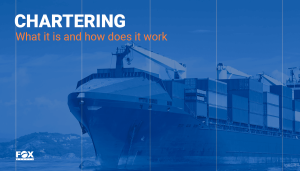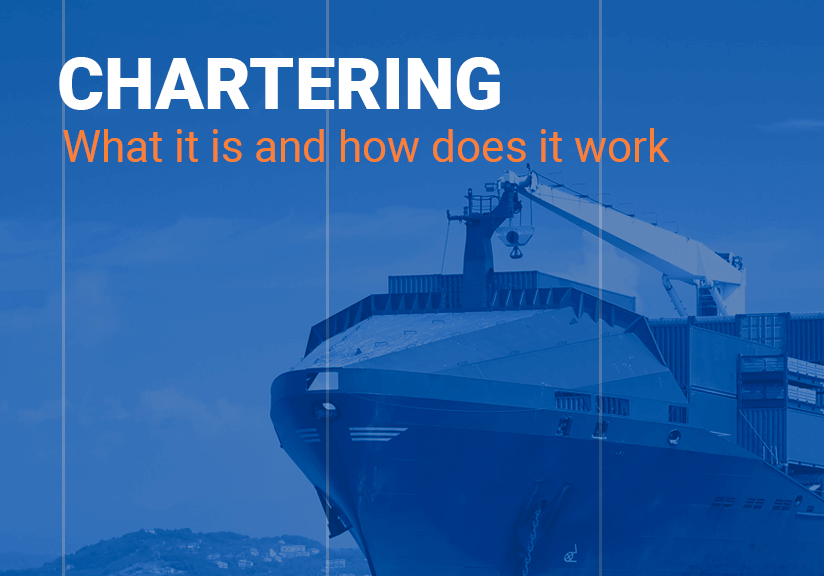Ship chartering is a vital process in the maritime industry that involves renting a vessel for the transportation of cargo, typically for a specified period or voyage. Whether you’re a shipowner or a charterer, understanding the ship chartering process is crucial for ensuring smooth operations and mitigating risks. This guide breaks down the key elements and steps of the ship chartering process, covering the types of charters, the parties involved, and how the process unfolds from start to finish.

1. Understanding Ship Chartering
Ship chartering refers to the hiring of a vessel and its crew to transport cargo from one port to another. Chartering can also involve the leasing of vessels for specific periods, with varying degrees of control retained by the shipowner. The charterer can be a cargo owner, a broker acting on behalf of the owner, or even a third party looking to profit by leasing the ship to others.
The ship chartering process ensures that goods are transported efficiently across international waters, and it plays a significant role in the global supply chain, contributing to the economies of countries worldwide.
Key Types of Charters
There are three main types of charters used in the industry: time charters, voyage charters, and bareboat charters. Each type serves a different purpose and caters to various requirements of shipowners and charterers.
a) Voyage Charter
In a voyage charter, the ship is hired for a specific voyage between the designated ports with a pre-agreed cargo. The shipowner is responsible for the management of the vessel, crew, and operational costs such as fuel and port charges. This type of charter is typically used for transporting large bulk cargo like coal, iron ore, or grain.
- Advantages: The charterer only pays for the voyage and does not need to worry about vessel management or operational risks.
- Disadvantages: The costs for a single voyage can be high, and delays (like port congestion) can lead to demurrage charges.
b) Time Charter
A time charter allows the charterer to hire the ship for a specific period of time (weeks, months, or even years), giving the charterer operational control over the vessel, such as deciding which ports to visit and what cargo to load, but the shipowner still manages the vessel’s crew and maintenance.
- Advantages: Flexibility in the number of voyages or trade routes during the charter period.
- Disadvantages: Charterers are responsible for operational costs like fuel (bunker) and port charges.
c) Bareboat Charter (Demise Charter)
In a bareboat charter, the charterer takes full control of the vessel, assuming responsibility for crew, management, maintenance, and all operational expenses. Essentially, the charterer leases the “bare” vessel, with no crew or provisions from the owner.
- Advantages: Full control of the ship’s operations and costs, ideal for long-term charters.
- Disadvantages: High operational responsibility and financial risk for the charterer.
Parties Involved in Ship Chartering
The ship chartering process involves several key parties:
Shipowner
The shipowner provides the vessel for charter and maintains its seaworthiness. The owner either manages the ship or delegates that responsibility to the charterer, depending on the type of charter.
Charterer
The charterer hires the ship for transporting goods. Depending on the type of charter, the charterer can take on operational responsibilities or simply pay for the transportation service.
Shipbroker
Shipbrokers act as intermediaries between shipowners and charterers. They help in negotiating terms, arranging contracts, and ensuring both parties’ requirements are met. Shipbrokers usually charge a commission for their services.
Freight Forwarder
Freight forwarders may be involved in chartering, especially when the cargo involves complex logistics. They manage the cargo on behalf of the shipper, including booking space on ships, handling documentation, and arranging inland transportation.
Steps in the Ship Chartering Process
The process of chartering a ship can be broken down into several key steps:
Step 1: Identifying Requirements
The charterer determines their needs, such as the type of cargo, its weight and volume, the origin and destination ports, and the desired timeframe. Based on these factors, they decide on the type of charter (voyage, time, or bareboat) that suits their requirements.
Step 2: Engaging a Shipbroker
In many cases, charterers contact a shipbroker to facilitate the process. The broker searches for available ships that match the charterer’s criteria and provides advice on the most suitable vessels. The broker also offers market insights, including freight rates and potential risks.
Step 3: Negotiating Terms
The broker helps both parties negotiate the key terms of the charter agreement, including:
- Freight rate or hire rate
- Duration of the charter (for time and bareboat charters)
- Cargo type and quantity
- Laytime (the amount of time allowed for loading and unloading)
- Demurrage and dispatch rates (penalties or rewards for exceeding or underutilizing laytime)
Both parties aim to balance their financial interests while ensuring the contract aligns with operational expectations.
Step 4: Fixing the Charter
Once the terms are agreed upon, the charterer and shipowner fix the charter. This is known as “fixing a ship.” A formal contract, known as a Charter Party (C/P), is signed. The Charter Party details all the terms and conditions agreed upon during negotiations.
The most common types of Charter Party forms include:
- Baltic and International Maritime Council (BIMCO) contracts
- Gencon (General Charter Party) forms
- NYPE (New York Produce Exchange) form for time charters
Step 5: Managing Operations
After the Charter Party is signed, the vessel is positioned for loading cargo. Both the shipowner and charterer fulfill their respective responsibilities according to the terms of the agreement.
For a voyage charter, the shipowner handles operational management, while in a time or bareboat charter, the charterer manages much of the vessel’s day-to-day operations. Communication between both parties is key to avoiding disputes.
Step 6: Post-Charter Settlement
Once the cargo is successfully delivered or the charter period ends, the financial settlement occurs. If any delays occurred that exceeded the agreed laytime, demurrage fees might apply. Similarly, dispatch fees could be paid if the charterer finishes loading or unloading ahead of schedule.
Challenges in Ship Chartering
The ship chartering process, while essential to maritime logistics, can present several challenges:
- Freight rate fluctuations: The market is influenced by global economic conditions, supply and demand, and geopolitical factors, making rates unpredictable.
- Weather-related delays: Bad weather can impact voyage schedules, causing delays and additional costs.
- Regulatory compliance: Vessels must comply with international regulations, such as IMO’s emission standards, which can impact operational costs.
- Port congestion: Delays in loading or unloading at busy ports can lead to demurrage charges and higher costs for charterers.
The ship chartering process is a complex but fundamental aspect of global shipping. It requires careful consideration of the type of charter, the parties involved, and the specific needs of the cargo or voyage. Whether you’re a shipowner or a charterer, understanding the intricacies of ship chartering is key to maximizing efficiency, managing costs, and ensuring compliance with maritime regulations. By following the steps outlined in this guide, you can navigate the ship chartering process with confidence, ensuring successful and profitable outcomes for all involved.


Your articles are useful.
Thank you.